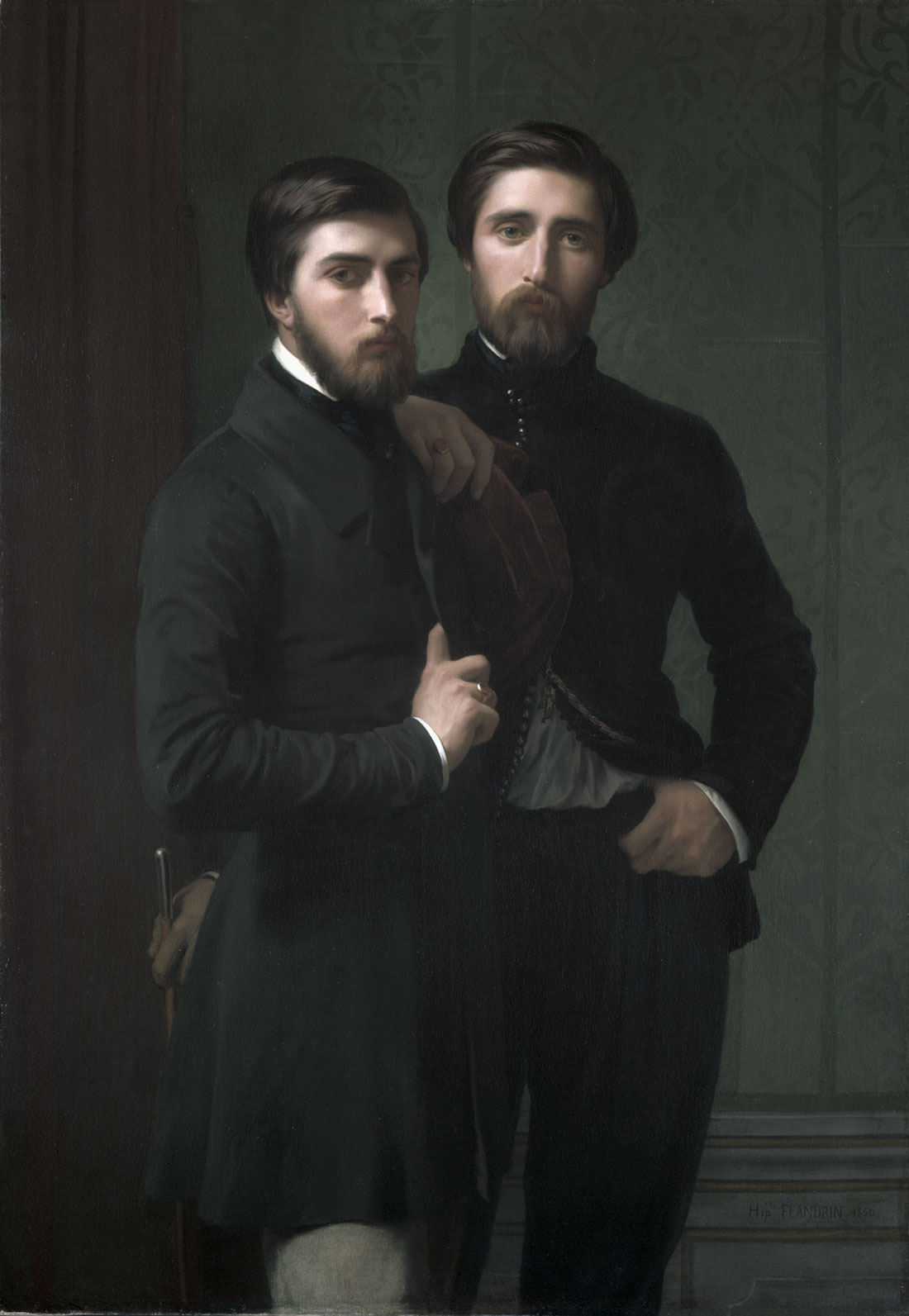By the 1790s, the republicanism of the American and French Revolutions had overthrown the aristocratic aesthetics of the 18th century. Bby the 1820s, with coal ash blanketing European cities, romanticists brooding, anti-aristocratic sentiments strong and a Protestant ethos of thriftiness prevailing, black was back. In the 19th century, simple black became republican, workmanlike and masculine. Republican governments and the male business class from all of Europe, Latin America and many parts of Asia adopted the black suit, which was a peculiar mix of British fashion, French tailoring, the Croatian tie and the Burgundian-Spanish-Mayan black. By the 19th century, many men in the European sphere of influence had once again adopted black coats and breeches, along with white collars, to project gravity, self-control and austerity. Men’s fashion today remains remarkably similar.
French Brothers in Black
Hippolyte-Jean Flandrin, Portrait of René-Charles Dassy and His Brother Jean-Baptiste-Claude-Amédé Dassy, 1850 (Cleveland Museum of Art; public domain).
Adrian Masters
Further reading
- Colomer, J.L., and A. Descalso (eds.) (2014) Spanish Fashion at the Courts of Early Modern Europe, vol. 2 (Madrid: CEEH).
- Contreras Sánchez, A. (1990) Historia de una tintórea olvidada: el proceso de explotación y circulación del palo de tinte, 1750–1807 (Mérida: Universidad Autónoma de Yucatán).
- Cooper, M. (1974) Rodrigues the Interpreter: An Early Jesuit in Japan and China (New York, NY: Weatherhill).
- Elliott, J.H. (1990) Imperial Spain, 1469–1716 (London: Penguin Books).
- Harvey, J. (1995) Men in Black (New York, NY: Columbia University Press).
- Jarvis, M.J. (2010) In the Eye of All Trade: Bermuda, Bermudians, and the Maritime Atlantic World, 1680–1783 (Chapel Hill, NC: University of North Carolina Press).
- McDonald, K.P. (2018) ‘“Sailors from the woods:” Logwood cutting and the spectrum of piracy’, in The Golden Age of Piracy: The Rise, Fall,and Enduring Popularity of Pirates, edited by Head, 50–74 (Athens, GA: University of Georgia Press).
- Netherton, R., and G.R. Owen-Crocker (eds.) (2007) Medieval Clothing and Textiles, vol. 3 (Woodbridge, Suffolk: Boydell Press).
- Pastoureau, M. (2008) Black: The History of a Color (Princeton, NJ: Princeton University Press).
- Record, S.J., and R.W. Hess (1943) Timbers of the New World (New Haven, CT: Yale University Press).
- Richmond Ellis, R. (2012) They Need Nothing: Hispanic-Asian Encounters of the Colonial Period (Toronto: University of Toronto Press).
- Roquero, A. (2006) Tintes y tintoreros de América (Madrid: Ministerio de Cultura).
- Tiesler, V., and M.C. Lozada (eds.) (2018) Social Skins of the Head: Body Beliefs and Ritual in Ancient Mesoamerica and the Andes (Albuquerque, NM: University of New Mexico Press).
- Valentini, M.B. (1704) Museum Museorum, oder Vollständige Schau-Bühne aller Materialen und Specereyen (Frankfurt am Main: Verlegung Johann David Zunners).





